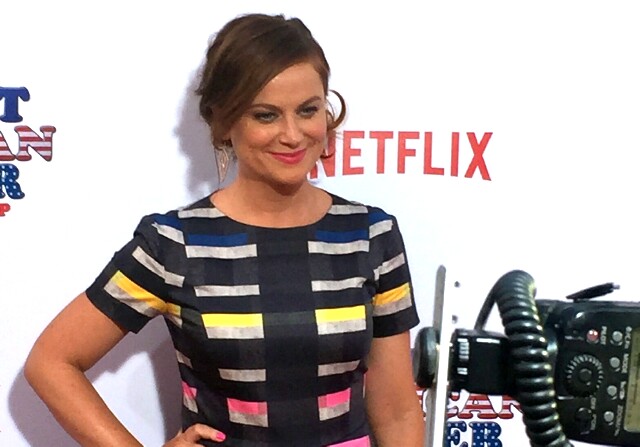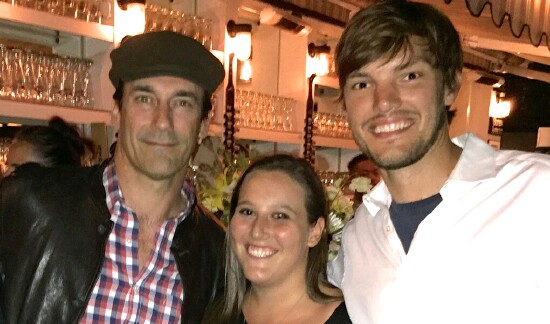Can Anything Stop the Decline of Traditional TV?

It was a steamy hot American summer evening at the premiere launch event for Netflix’s new “Wet Hot American Summer” series. After speeches and screenings of the first two episodes at a Chelsea theater (only minimal binge viewing is allowed at premieres); the cast, crew, executives and other assembled party-goers made it down to the Standard Hotel’s Biergarten, located in New York’s meatpacking district.
My cousin David Wain, who created the original film and Netflix series with Michael Showalter, and who also directs ands performs in both adaptations, invited us for the evening. Wain re-assembled his stellar cast from the original theatrical (including Amy Poehler, pictured at top) and then attracted more luminaries to the series (includingJon Hamm, pictured below left with my daughter Amanda and friend Grant Thomas).

The series adaptation of “Summer” was the result of great data mining from Netflix to predict what audiences want to see. Netflix closely identified trends from the original theatrical plus other films and series viewed on their service to once again craft an original television program.
Not much is known outside of Netflix about their specific show viewership. But we do know that Netflix alone accounts for approximately 40% of the decline in network and cable viewership. So they must know a lot! And they are disruption accelerators.
Video is everywhere; viewing is in a huge state of flux, and consumers are consuming all screens. Netflix, OTT, YouTube, on demand, cord cutting, cord shaving and now the millennial cord-nevers are challenging the advertising paradigm as never before.
The decline and disruption of traditional television is marching aggressively forward:
- Traditional television viewing has decreased from the prior year across the majority of demographics (Nielsen)
- The pay TV industry lost an estimated 556,000 subs in Q2 (MoffettNathanson)
- ESPN alone lost 3.2m estimated subs over 12+ months (WSJ)
- Cable channels' commercial ratings have been down every month since May 2014 (MoffettNathanson)
- In July, usually a good season for cable viewing, 21 of the 30 top cable nets saw significant declines in prime time ratings (WSJ)
Now add these facts to the mix:
- Video is still the most powerful form of ad messaging
- Many popular services such as Netflix and HBO Go do not take advertising
- Ad blocking is growing exponentially online
- Digital video is being challenged by vast viewability issues
- Consumers are out and about, outside the home more than ever
So, where can advertisers go to effectively reach today’s empowered, on-the-go consumers as media habits morph and more questions arise each day regarding digital metrics and viewability?
These critical issues in today's multi-screen world are a major part of the raison d'être of the DPAA's 2015 Video Everywhere Summit, November 3 at the Crowne Plaza Hotel in New York.
Back at the steamy Netflix cast party, we narrowly avoided Judah Friedlander’s wicked Olympics style ping-pong strokes. We then boorishly interrupted Louis CK’s punch line, overheard Judd Apatow hint at his new working script and eyed David Hyde Pierce looking lonely without Frasier.
While the 2015 Video Everywhere Summit will have a bit less Hollywood star power than the Netflix event, it will have some of the brightest and best from Madison Avenue on stage, at breakfast and lunch, in the audience, the exhibition hall and at post event cocktails. And, together, we will tackle the issue of how advertisers can most effectively navigate today's increasingly disrupted media world.
The opinions and points of view expressed in this commentary are exclusively the views of the author and do not necessarily represent the views of MediaVillage/MyersBizNet management or associated bloggers.


